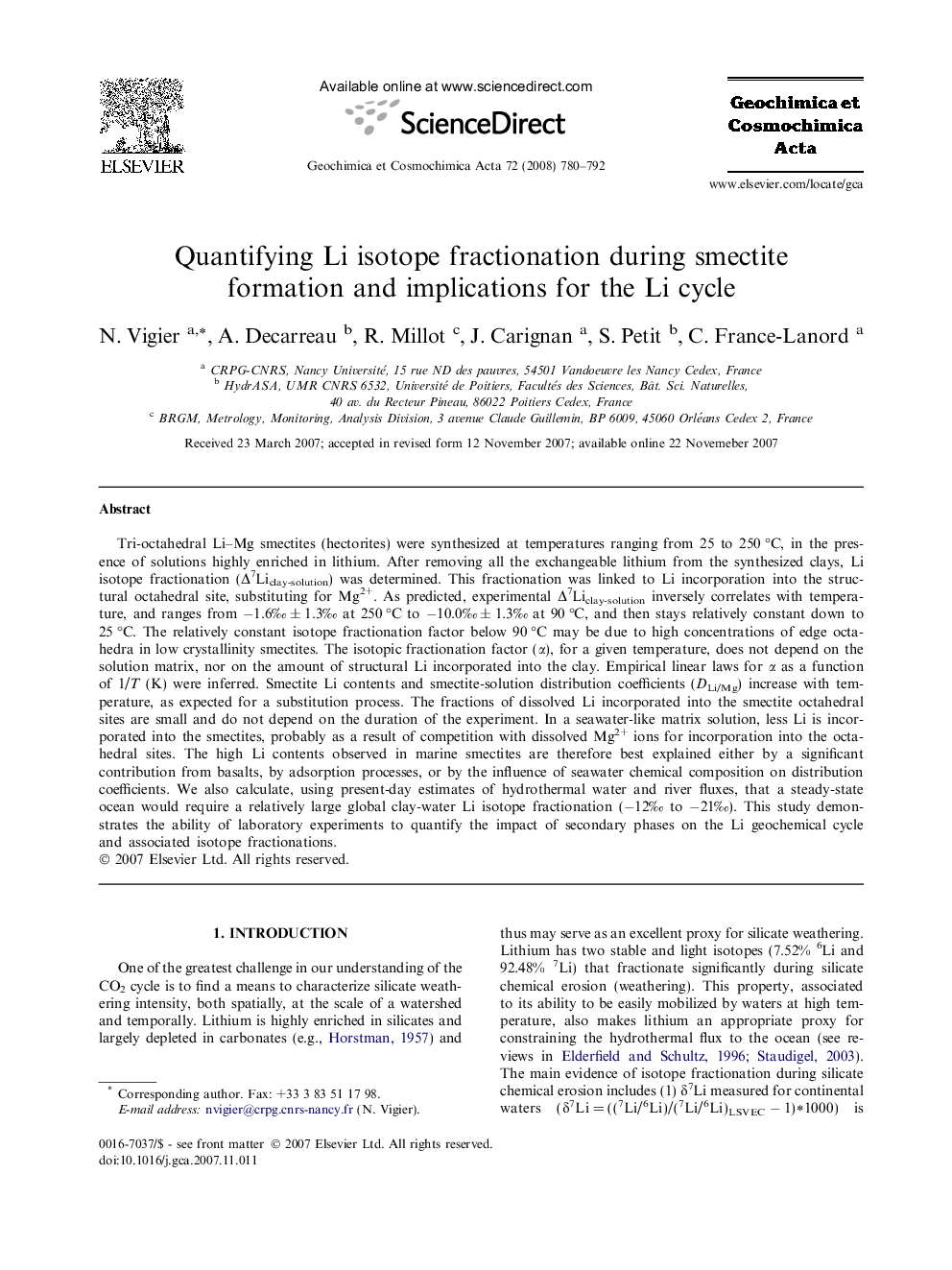| کد مقاله | کد نشریه | سال انتشار | مقاله انگلیسی | نسخه تمام متن |
|---|---|---|---|---|
| 4705184 | 1352946 | 2008 | 13 صفحه PDF | دانلود رایگان |

Tri-octahedral Li–Mg smectites (hectorites) were synthesized at temperatures ranging from 25 to 250 °C, in the presence of solutions highly enriched in lithium. After removing all the exchangeable lithium from the synthesized clays, Li isotope fractionation (Δ7Liclay-solution) was determined. This fractionation was linked to Li incorporation into the structural octahedral site, substituting for Mg2+. As predicted, experimental Δ7Liclay-solution inversely correlates with temperature, and ranges from −1.6‰ ± 1.3‰ at 250 °C to −10.0‰ ± 1.3‰ at 90 °C, and then stays relatively constant down to 25 °C. The relatively constant isotope fractionation factor below 90 °C may be due to high concentrations of edge octahedra in low crystallinity smectites. The isotopic fractionation factor (α), for a given temperature, does not depend on the solution matrix, nor on the amount of structural Li incorporated into the clay. Empirical linear laws for α as a function of 1/T (K) were inferred. Smectite Li contents and smectite-solution distribution coefficients (DLi/Mg) increase with temperature, as expected for a substitution process. The fractions of dissolved Li incorporated into the smectite octahedral sites are small and do not depend on the duration of the experiment. In a seawater-like matrix solution, less Li is incorporated into the smectites, probably as a result of competition with dissolved Mg2+ ions for incorporation into the octahedral sites. The high Li contents observed in marine smectites are therefore best explained either by a significant contribution from basalts, by adsorption processes, or by the influence of seawater chemical composition on distribution coefficients. We also calculate, using present-day estimates of hydrothermal water and river fluxes, that a steady-state ocean would require a relatively large global clay-water Li isotope fractionation (−12‰ to −21‰). This study demonstrates the ability of laboratory experiments to quantify the impact of secondary phases on the Li geochemical cycle and associated isotope fractionations.
Journal: Geochimica et Cosmochimica Acta - Volume 72, Issue 3, 1 February 2008, Pages 780–792